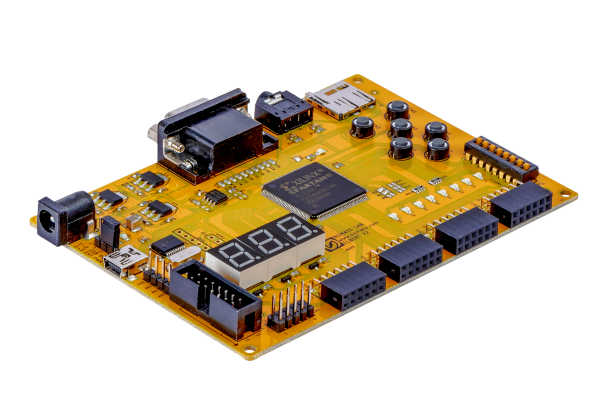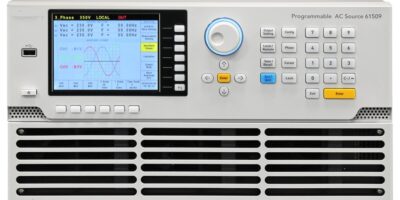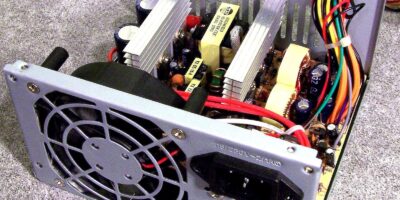The global Low-End FPGA Market generated $ 3 billion in 2023, and is projected to reach $ 7 billion by 2033, registering a CAGR of 9.5% from 2024 to 2033.
Introduction: In the ever-evolving landscape of electronics and digital systems, Field-Programmable Gate Arrays (FPGAs) have emerged as versatile solutions that provide flexibility, customization, and performance. While high-end FPGAs dominate certain sectors, the low-end FPGA market has gained traction for applications where cost-effectiveness, power efficiency, and moderate computational capabilities are paramount.
Understanding FPGAs: FPGAs are integrated circuits that allow users to configure and customize digital logic circuits according to their specific requirements. Unlike Application-Specific Integrated Circuits (ASICs), FPGAs are programmable after manufacturing, offering adaptability without the need for costly and time-consuming fabrication processes.
Low-End FPGA Characteristics: Low-end FPGAs cater to applications that do not demand the extensive capabilities of their high-end counterparts. Key characteristics of low-end FPGAs include modest logic capacity, lower power consumption, and affordability. These devices find applications in a wide array of industries, such as consumer electronics, industrial automation, and Internet of Things (IoT) devices.
Market Trends and Drivers: Several trends and drivers contribute to the growth of the low-end FPGA market:
- Rising Demand in IoT Devices: The proliferation of IoT devices has fueled the demand for low-end FPGAs due to their ability to handle specific tasks efficiently. These devices often require customization for various sensors, communication protocols, and power constraints.
- Consumer Electronics Integration: Low-end FPGAs have found their way into consumer electronics like smart TVs, set-top boxes, and gaming consoles. Their flexibility allows manufacturers to adapt to changing standards and specifications without redesigning the entire hardware.
- Educational and Hobbyist Applications: The affordability and ease of use of low-end FPGAs make them popular in educational settings and among hobbyists. These devices provide a hands-on experience for learning digital design, making them valuable tools for students and DIY enthusiasts.
- Emerging Markets and Developing Economies: The demand for cost-effective solutions in emerging markets and developing economies has driven the adoption of low-end FPGAs. These regions often prioritize affordability without compromising on performance for applications like smart agriculture, healthcare, and basic industrial automation.
- Advancements in Design Tools: The availability of user-friendly design tools has simplified the process of programming and configuring FPGAs. This has contributed to the accessibility of low-end FPGAs, enabling designers with limited experience to leverage their capabilities.
Receive the FREE Sample Report of Low-End FPGA Market Research Insights @ https://stringentdatalytics.com/sample-request/low-end-fpga-market/10420/
Market Segmentations:
Global Low-End FPGA Market: By Company
• Xilinx (US)
• Intel (US)
• Lattice Semiconductor (US)
• Microchip Technology (US)
• QuickLogic (US)
• TSMC (Taiwan)
• Microchip (US)
• United Microelectronics (Taiwan)
• GLOBALFOUNDRIES (US)
• Achronix (US)
• S2C Inc (US)
Global Low-End FPGA Market: By Type
• Less Than 28 nm
• 28-90 nm
• More Than 90 nm
Global Low-End FPGA Market: By Application
• Telecommunications
• Automotive
• Industrial Control
• Consumer Products
• Data Center
• Medical
Regional Analysis of Global Low-End FPGA Market
All the regional segmentation has been studied based on recent and future trends, and the market is forecasted throughout the prediction period. The countries covered in the regional analysis of the Global Low-End FPGA market report are U.S., Canada, and Mexico in North America, Germany, France, U.K., Russia, Italy, Spain, Turkey, Netherlands, Switzerland, Belgium, and Rest of Europe in Europe, Singapore, Malaysia, Australia, Thailand, Indonesia, Philippines, China, Japan, India, South Korea, Rest of Asia-Pacific (APAC) in the Asia-Pacific (APAC), Saudi Arabia, U.A.E, South Africa, Egypt, Israel, Rest of Middle East and Africa (MEA) as a part of Middle East and Africa (MEA), and Argentina, Brazil, and Rest of South America as part of South America.
Click to Purchase Low-End FPGA Market Research Report @ https://stringentdatalytics.com/purchase/low-end-fpga-market/10420/
Challenges and Limitations: While low-end FPGAs offer cost-effective solutions for many applications, they come with certain challenges and limitations:
- Limited Logic and Processing Power: Low-end FPGAs may not be suitable for applications that require extensive logic capacity or high computational performance. Designers need to carefully evaluate their project requirements before opting for a low-end solution.
- Resource Constraints: The limited resources in terms of logic elements, memory, and DSP blocks can pose challenges for complex designs. Developers must optimize their designs to fit within the constraints of low-end FPGAs.
- Competition from Alternative Technologies: In some cases, alternative technologies such as microcontrollers or Application-Specific Standard Products (ASSPs) may offer a more straightforward and cost-effective solution for specific applications, leading to competition for low-end FPGAs.
Future Outlook: The low-end FPGA market is poised for growth as technology continues to advance and applications for FPGAs expand. Future trends may include:
- Integration with AI and Machine Learning: Low-end FPGAs may see increased integration with artificial intelligence (AI) and machine learning (ML) applications, leveraging their parallel processing capabilities for edge computing.
- Enhancements in Power Efficiency: Ongoing efforts to improve power efficiency in low-end FPGAs will enable their adoption in battery-powered and energy-sensitive applications, further expanding their market reach.
- Evolving Design Tools and Ecosystem: Continued development of user-friendly design tools and a robust ecosystem will empower designers, enabling them to harness the potential of low-end FPGAs without significant expertise.
Conclusion: The low-end FPGA market plays a crucial role in meeting the diverse needs of applications that prioritize cost-effectiveness, flexibility, and customization. As technology continues to advance, the affordability and adaptability of low-end FPGAs will likely drive their increased adoption across various industries, shaping the digital landscape of the future.
About Stringent Datalytics
Stringent Datalytics offers both custom and syndicated market research reports. Custom market research reports are tailored to a specific client’s needs and requirements. These reports provide unique insights into a particular industry or market segment and can help businesses make informed decisions about their strategies and operations.
Syndicated market research reports, on the other hand, are pre-existing reports that are available for purchase by multiple clients. These reports are often produced on a regular basis, such as annually or quarterly, and cover a broad range of industries and market segments. Syndicated reports provide clients with insights into industry trends, market sizes, and competitive landscapes. By offering both custom and syndicated reports, Stringent Datalytics can provide clients with a range of market research solutions that can be customized to their specific needs.
Reach US
Stringent Datalytics
+1 346 666 6655
Social Channels:




Leave a Reply